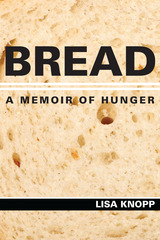
When Lisa Knopp was 54, she began tightly restricting what and how much she ate. A whisper, a shadow, or a flicker is what she wanted to become. When she finally realized that the severe restricting that had left her sick and small when she was 15 and 25 had returned when she was deep into middle age, she was full of urgent questions. Why did she respond to that which overwhelmed or threatened her by eating so little? How could she heal from a condition that is caused by a tangle of genetic, biological, familial, psychological, economic, spiritual, and cultural forces? Are eating disorders and disordered eating in older women caused by the same factors as those in younger females? Or are they caused, in part, by the sorrows and frustrations of aging in a culture that sees midlife and beyond as a time marked by increasing deterioration, powerlessness, dependency, and irrelevance?
Knopp’s focus on eating disorders among older women makes Bread unique among “anorexia memoirs.” Most experts agree that about 10 percent of those with eating disorders are older women, though the number is surely higher, since most women who restrict, binge, or purge don’t meet the narrow diagnostic criteria for anorexia nervosa, bulimia nervosa, or binge-eating disorder. And, too, many in this group disguise or misread their symptoms as being due to a health condition or changes associated with aging. For teenagers, symptoms usually manifest as a result of problems in their family of origin. But for older women, symptoms are more likely to manifest as a result of changes in the family they created, including divorce, infidelity, relationship conflicts, an empty nest, financial strains, a child with medical, emotional, or legal problems, and the demands of caring for a sick or aged parent, as well as their own health problems and fear of aging.
In her search for answers, Knopp read the research on eating disorders and imaginatively reentered those dark periods when she was self-starving. Bread, which is at once an illness, food, and spiritual memoir, will convince readers, both those who suffer from a conflicted relationship with food, weight, and self-image and those who do not, that eating disorders and disordered eating are about more than just food and weight. Indeed, they speak of our deepest hungers and desires and the various ways in which we can nourish and fill ourselves.
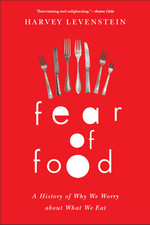
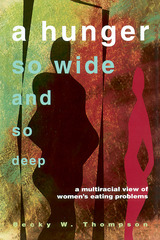
A new feminist classic--now in paper!
Based on in-depth life history interviews with African-American, Latina, and white women-both lesbian and heterosexual-this book chronicles the effects of racism, sexism, acculturation, and sexual abuse on women’s bodies and eating patterns.
“A wonderful book: gripping, creative and profoundly humane. In lucid prose Thompson offers an original explanation for women’s eating problems. She argues that many women turn to food-bingeing, dieting, purging, or starving- as a sensible means of coping with physical and psychic ‘atrocities’ deriving from ‘racism, sexism, homophobia, classism, the stress of acculturation, and emotional, physical, and sexual abuse.’” Women’s Review of Books“Surprising and alarming. . . . Thompson urges a second look at our national obsession with weight and proffers theories and practices that could save the lives of women of all colors and sexual orientations.” Lambda Book Report“Thompson breaks new ground and offers hope for the multitudes of women who have swallowed their pain.” Evelyn C. White, Editor, The Black Women's Health Book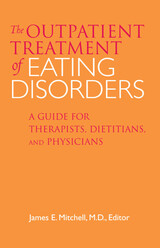
Over the past decade, there have been substantial and rapidly changing developments in the treatment of eating disorders. Grounded in the most recent literature, The Outpatient Treatment of Eating Disorders balances general and pathology-specific research to emphasize outpatient treatment. The contributors provide an overview of the full range of eating disorders and offer clinical recommendations for a comprehensive treatment plan for patients with these disorders.
These distinguished contributors present case studies and hands-on treatment models based on cognitive behavioral techniques. Using three vignettes-a woman with anorexia nervosa, a woman with bulimia nervosa, and a man with binge eating disorder-the authors offer practical approaches, including extensive nutritional information for dietitians, for treating these three major forms of eating disorders. Designed for all health care workers who deal with eating disorder patients, this indispensable guide will be useful for psychiatrists, other physicians, psychologists, social workers, exercise physiologists, and dietitians as well as those who suffer from eating disorders.
Contributors: David W. Abbott, U of North Dakota; Roslyn Binford, U of Minnesota; Carol Brunzell, Fairview-University Medical Center; Scott Crow, U of Minnesota; Mary Hendrickson-Nelson, HealthPartners of Minnesota; Susan Jack, Fairview-University Medical Center; Pamela K. Keel, Harvard U; Melissa Pederson Mussell, U of St. Thomas; Carol Peterson, U of Minnesota; Claire Pomeroy, U of Kentucky; LeAnn Snow, U of Minnesota; Stephen A. Wonderlich, U of North Dakota; and Martina de Zwaan, University Hospital, Vienna.
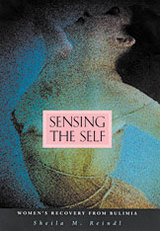
Hearing about the destructive compulsion of bulimia nervosa, outsiders may wonder, "How could you ever start?" Those suffering from the eating disorder ask themselves in despair, "How can I ever stop?" How do you break the cycle of bingeing, vomiting, laxative abuse, and shame? While many books describe the descent into eating disorders and the resulting emotional and physical damage, this book describes recovery.
Psychologist Sheila Reindl has listened intently to women's accounts of recovering. Reindl argues compellingly that people with bulimia nervosa avoid turning their attention inward to consult their needs, desires, feelings, and aggressive strivings because to do so is to encounter an annihilating sense of shame. Disconnected from internal, sensed experience, bulimic women rely upon external gauges to guide their choices. To recover, bulimic women need to develop a sense of self--to attune to their physical, psychic, and social self-experience. They also need to learn that one's neediness, desire, pain, and aggression are not sources of shame to be kept hidden but essential aspects of humanity necessary for zestful life. The young women with whom Reindl speaks describe, with great feeling, their efforts to know and trust their own experience.
Perceptive, lucid, and above all humane, this book will be welcomed not only by professionals but by people who struggle with an eating disorder and by those who love them.
READERS
Browse our collection.
PUBLISHERS
See BiblioVault's publisher services.
STUDENT SERVICES
Files for college accessibility offices.
UChicago Accessibility Resources
home | accessibility | search | about | contact us
BiblioVault ® 2001 - 2024
The University of Chicago Press









